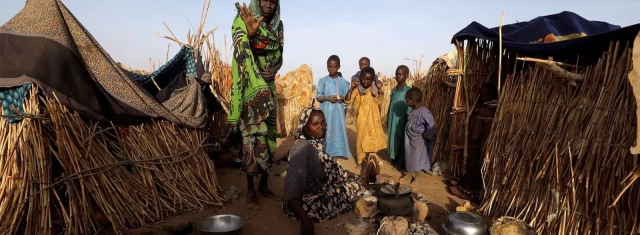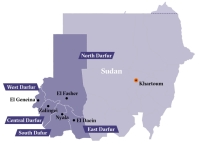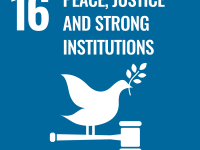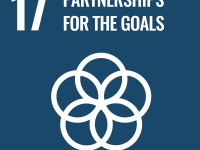News
Local ceasefires and disrupted aid: How Sudan’s conflict is impacting Darfur
Analysis By Philip Kleinfeld

A Sudanese family in makeshift shelters in Chad (Source: Zohra Bensemra/Reuters)
ARAC International Strategic Communications -
May 2023
This story was originally published by The New Humanitarian.
By Philip Kleinfeld
The conflict between Sudan’s army and main paramilitary force is exacting a devastating toll on residents of Khartoum. But fighting has also swept through the long-troubled Darfur region, where humanitarian needs were already extremely high.
This story was originally published by The New Humanitarian.
By Philip Kleinfeld
The conflict between Sudan’s army and main paramilitary force is exacting a devastating toll on residents of Khartoum. But fighting has also swept through the long-troubled Darfur region, where humanitarian needs were already extremely high.
Large numbers of civilians have been killed as the two forces have battled for control of Darfur’s main towns. And community militias have also entered the fray in some areas, stoking fears the conflict could morph into a multi-sided power struggle.
Yet despite the violence, communities have brokered local ceasefires between the army and the Rapid Support Forces (RSF), whose leaders are Darfuri. The pacts are holding in some towns, creating space for aid operations to be rebooted.
“Community leaders have a long history of mediation and a long history of settling disputes,” Mohammed Zakaria Issak, part of a group of imams who organised a ceasefire last month in Nyala, capital of South Darfur state, told The New Humanitarian.
Darfur has faced major strife since 2003, when rebels drawn mostly from non-Arab groups revolted against former ruler Omar al-Bashir, citing marginalisation. The autocrat’s regime armed Darfuri Arab militias, known as Janjaweed, to fight the rebels.
Yet despite the violence, communities have brokered local ceasefires between the army and the Rapid Support Forces (RSF), whose leaders are Darfuri. The pacts are holding in some towns, creating space for aid operations to be rebooted.
“Community leaders have a long history of mediation and a long history of settling disputes,” Mohammed Zakaria Issak, part of a group of imams who organised a ceasefire last month in Nyala, capital of South Darfur state, told The New Humanitarian.
Darfur has faced major strife since 2003, when rebels drawn mostly from non-Arab groups revolted against former ruler Omar al-Bashir, citing marginalisation. The autocrat’s regime armed Darfuri Arab militias, known as Janjaweed, to fight the rebels.
Despite a campaign of terror, the Arab militias were regularised as the RSF in 2013. The new force grew in stature, helping to oust al-Bashir in 2019 while morphing from a local militia into a national group that challenged the supremacy of the regular army.
Darfuris say Khartoum is now experiencing the kind of conflict their vast western region did for decades. Yet many worry that if the RSF loses the fight for the capital, its forces will regroup in Darfur, turning the region into the war’s epicentre.
“We are going to see tough days in many cities in Darfur,” Ahmed Gouja, a human rights monitor and journalist based in South Darfur, which is one of five states in the region, told The New Humanitarian.
Darfuris say Khartoum is now experiencing the kind of conflict their vast western region did for decades. Yet many worry that if the RSF loses the fight for the capital, its forces will regroup in Darfur, turning the region into the war’s epicentre.
“We are going to see tough days in many cities in Darfur,” Ahmed Gouja, a human rights monitor and journalist based in South Darfur, which is one of five states in the region, told The New Humanitarian.
A costly conflict: ‘The needs and the challenges are too big’
Both the army and the RSF have bases in Darfur and started fighting soon after war broke out on 15 April. By 5 May, more than 200,000 people had been uprooted in the region, and hospitals, markets, and banks remain out of commission.Assistance programmes for the more than 1.5 million Darfuris living in displacement camps – most of them non-Arab war victims from the early 2000s – have also been disrupted, though support for these communities had been waning for many years.
Local initiatives have sprung up in the absence of aid workers: Community leaders have led efforts to hunt down looted medicine, and resistance committees have been cleaning up clinics and cooking meals for doctors.
Gouja said these efforts “show the spirit of the Sudanese”, though he called for the government and humanitarian agencies to do their part too. “Right now the needs and the challenges are too big,” the human rights monitor said.
International aid workers – and some national staff – were evacuated from Darfur when the conflict started. Aid agency offices, vehicles, and warehouses were looted in some areas, and three World Food Programme staff were killed.
But aid groups have retained national staff on the ground, and do have prepositioned supplies, some of which are now being distributed as tensions ease in a few areas, said Antony Spalton who leads UNICEF’s work in North Darfur state.
Spalton said future relief efforts will depend on the ability of aid agencies to move supplies safely through Darfur, and to get goods flowing in via humanitarian corridors from Khartoum, Port Sudan in the east, or Chad, which shares a border with Darfur.
“At the moment, for Darfur, we seem to have a bit of a window,” Spalton said, referring to the ceasefires. “We are still working, but if we have more supplies and the funding on the ground, we can continue and extend this lifesaving work.”
Gouja said the army and the RSF will need to provide “clear commitments” that aid groups can operate safely. “They [need] to be responsible to protect and give access to all the aid agencies,” he said.
Spalton said future relief efforts will depend on the ability of aid agencies to move supplies safely through Darfur, and to get goods flowing in via humanitarian corridors from Khartoum, Port Sudan in the east, or Chad, which shares a border with Darfur.
“At the moment, for Darfur, we seem to have a bit of a window,” Spalton said, referring to the ceasefires. “We are still working, but if we have more supplies and the funding on the ground, we can continue and extend this lifesaving work.”
Gouja said the army and the RSF will need to provide “clear commitments” that aid groups can operate safely. “They [need] to be responsible to protect and give access to all the aid agencies,” he said.
A grassroots ceasefire: ‘We told them that fighting here is just nonsense’
The future security situation may hinge on the durability of the local ceasefire initiatives, which have managed to prevent, halt, or reduce fighting in the capitals of four of the five regional states.These bottom-up efforts have so far achieved more than the high-level talks ongoing between envoys of the two factions in Saudi Arabia. And analysts said they underline the determination of Darfur’s inhabitants to resist another destructive war.
“We are counting on our own wealth of Indigenous experience to deal with crises and turbulent times,” said Suad Musa, a Darfuri researcher and activist. “People have their own means and relationships of co-existence.”
On day three of the conflict in Nyala, the imam, Issak, said he was one of five religious leaders who risked bullets and bombs to plead with local RSF commanders to stop fighting.
He said the group used two arguments to persuade the RSF: that the shedding of blood is against religious teachings; and that regime change is not something that can be achieved in Nyala, which is more than 1,000 kilometres from the capital.
“We are counting on our own wealth of Indigenous experience to deal with crises and turbulent times.”
“We told them that fighting here in Nyala, or elsewhere outside of Khartoum, is just nonsense, that it won’t come out with any result,” said Issak, who has conflict mediation experience with a peacekeeping mission that left Darfur in 2020.
After a positive response, Issak and his group went next to meet the local commander of the army, where they repeated the same arguments and obtained similar commitments.
Grassroots efforts also succeeded in El Fasher – the capital of North Darfur – with community leaders emphasising to the belligerents that Darfur’s population has experienced enough conflict.
“The language that we are using with both sides is that all wars end by peace,” Nimir Mohammed Abdelrahman, governor of North Darfur, told The New Humanitarian. “Also, we tell them that the people here in North Darfur will suffer when you continue to fight each other.”
“We told them that fighting here in Nyala, or elsewhere outside of Khartoum, is just nonsense, that it won’t come out with any result,” said Issak, who has conflict mediation experience with a peacekeeping mission that left Darfur in 2020.
After a positive response, Issak and his group went next to meet the local commander of the army, where they repeated the same arguments and obtained similar commitments.
Grassroots efforts also succeeded in El Fasher – the capital of North Darfur – with community leaders emphasising to the belligerents that Darfur’s population has experienced enough conflict.
“The language that we are using with both sides is that all wars end by peace,” Nimir Mohammed Abdelrahman, governor of North Darfur, told The New Humanitarian. “Also, we tell them that the people here in North Darfur will suffer when you continue to fight each other.”
Widespread destruction: ‘We were collecting the corpses for three days’
Few are confident that a similar strategy will work with the leaders of the two factions – army head Abdel Fattah al-Burhan and RSF chief Mohamed Hamdan Dagalo, who is better known as Hemedti.Their conflict is not one of rival personalities: It is the latest iteration in a decades-long struggle between military and political elites – traditionally drawn from groups based in the centre of Sudan – and challengers from marginalised peripheries.
Both parties control large chunks of Sudan’s economy – gold mines, real estate, construction, and much more – and seem to be fighting to the death to protect their interests.
Gouja said the two sides are agreeing to ceasefires in Darfur for military reasons. For example, he said the army is weak in Nyala and needs a break, while the RSF is using the pause to amass fighters and send them to Khartoum.
Though ceasefires have prevented direct confrontations in several key cities in Darfur, they have not protected civilians against a spree of looting, several rights monitors and local journalists added.
A ceasefire has also proved difficult to put in place in El Geneina, the capital of West Darfur state, which has witnessed some of the bloodiest fighting seen in Sudan over the past month.
On top of combat between the army and the RSF, confrontations have broken out in El Geneina between local RSF-aligned Arab militias and armed members of the area’s non-Arab Masalit group.
This fighting follows a pattern of violence since 2019 that has seen Arab militias attack Masalit communities. The conflict has been framed as “tribal”, but Masalit say it is part of the same pattern of government-linked militia violence ongoing since 2003.
Eyewitnesses described to The New Humanitarian scenes of widespread destruction in recent days, with more than 400 people reportedly killed, government institutions looted, public infrastructure destroyed, and thousands fleeing to neighbouring Chad.
On top of combat between the army and the RSF, confrontations have broken out in El Geneina between local RSF-aligned Arab militias and armed members of the area’s non-Arab Masalit group.
This fighting follows a pattern of violence since 2019 that has seen Arab militias attack Masalit communities. The conflict has been framed as “tribal”, but Masalit say it is part of the same pattern of government-linked militia violence ongoing since 2003.
Eyewitnesses described to The New Humanitarian scenes of widespread destruction in recent days, with more than 400 people reportedly killed, government institutions looted, public infrastructure destroyed, and thousands fleeing to neighbouring Chad.
“We were collecting the corpses [for three days] and working for more than 12 hours a day, but we couldn’t finish them,” said Musaab Abdul Wahab, who works in El Geneina for the Sudanese Red Crescent.
“The causes of deaths are brutal as we found some bodies lost some of their parts by knives or axes [and] the use of heavy guns and cannons is very intensive,” Wahab added.
“The causes of deaths are brutal as we found some bodies lost some of their parts by knives or axes [and] the use of heavy guns and cannons is very intensive,” Wahab added.
Resisting the ‘vagaries of war’
What happens next in Darfur is hard to predict.There are several rebel groups active in the region that have traditionally fought against both the RSF and the army. They are staying neutral for now but may soon be tempted to pick sides, creating a more multi-layered battleground.
“They know what war is, and that is why they were trying their utmost to make sure it doesn’t happen in Darfur again.”
The army is also trying to forge partnerships with individuals from the Arab Rizeigat group that Hemedti, the RSF leader, hails from. The aim is to weaken Hemedti, but such actions could have a polarising impact on the Rizeigat community.
Still, most locals reject both sides and don’t want to be drawn into the conflict, said Munzoul Assal, a professor of social anthropology at the University of Khartoum. Assal pointed at the ceasefires as an example of where communities stand.
“People went through the vagaries of war,” said Assal, who is from Darfur. “They know what war is, and that is why they were trying their utmost to make sure it doesn’t happen in Darfur again.”
As the local ceasefires hold, Abdelrahman, the governor of North Darfur, said one of his key priorities is getting aid agencies and humanitarian workers back into the region, and kickstarting relief operations.
“The most important [thing] for us is food and medical supplies,” he told The New Humanitarian. “That is what we need right now. Otherwise, the humanitarian situation is going to be a disaster.
Additional reporting from Mohammed Amin in Port Sudan, Sudan.
Edited by Andrew Gully.
–––––
The New Humanitarian puts quality, independent journalism at the service of the millions of people affected by humanitarian crises around the world. Find out more at www.thenewhumanitarian.org.
This article was re-published by ARAC International Strategic Communications Bureau under a Creative Commons licence (CC BY-NC-ND 4.0) with permission from The New Humanitarian.
“The most important [thing] for us is food and medical supplies,” he told The New Humanitarian. “That is what we need right now. Otherwise, the humanitarian situation is going to be a disaster.
Additional reporting from Mohammed Amin in Port Sudan, Sudan.
Edited by Andrew Gully.
–––––
The New Humanitarian puts quality, independent journalism at the service of the millions of people affected by humanitarian crises around the world. Find out more at www.thenewhumanitarian.org.
This article was re-published by ARAC International Strategic Communications Bureau under a Creative Commons licence (CC BY-NC-ND 4.0) with permission from The New Humanitarian.
more information: https://www.arac-international.org/2023/05/local-ceasefires-and-disrupted-aid-how.html
Liability for this article lies with the author, who also holds the copyright. Editorial content from USPA may be quoted on other websites as long as the quote comprises no more than 5% of the entire text, is marked as such and the source is named (via hyperlink).








